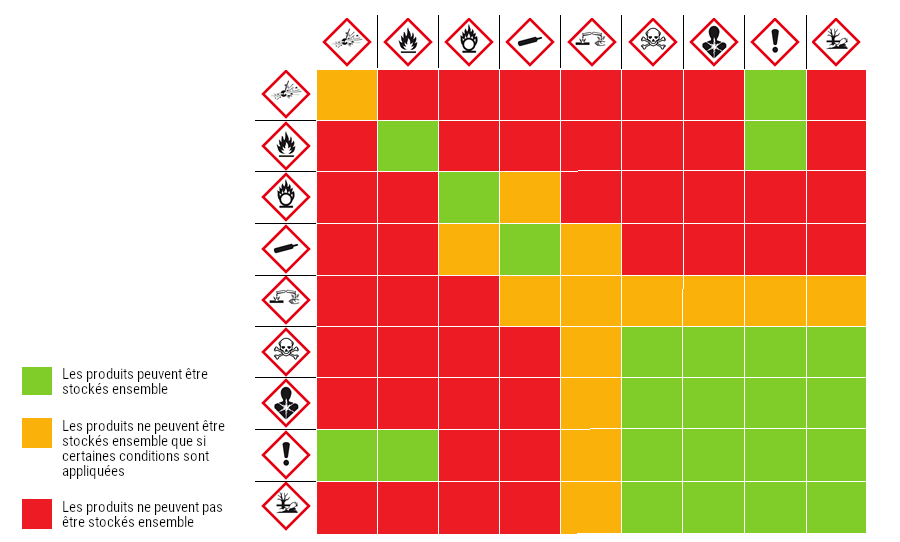
How do I choose a drip tray?
Store your chemicals and protect your working environment
Provost, France's leading manufacturer of shelving and storage solutions, supports you in all areas of your business, offering a complete range of retention solutions for hazardous and environmentally harmful products. More than 80 technical sales staff and a design office of 20 technicians are on hand to offer you the solution best suited to your needs.

Retention bin for hazardous storage
Acids, glues, resins, degreasers, thinners, paints... Chemical agents are present in the workplace. Many chemicals can have harmful effects on people and the environment. Whether substances or mixtures, these hazardous products must be prevented, identified and stored efficiently.
To limit staff exposure to hazards, you need to organize your product storage either in a specific ventilated room, in an outside container, in a storage cabinet with retention tanks, or on a shelf equipped with steel or polyethylene retention tanks.
Retention bins, placed under containers, are used to recover liquids in the event of damage to stored containers (impacts, falls, fire, etc.).
What the regulations say
The regulations distinguish 3 categories of plant
| Non-classified facilities | Installations subject to declaration | Facilities subject to authorization |
|
|
|
To find out which category of facility you fall into, contact your local prefecture.
Retention tank capacity regulated by the decree of October 4, 2010
Any storage of a liquid likely to cause water or soil pollution must be associated with a retention capacity whose volume is at least equal to the greater of the following two values:
- 100% of the capacity of the largest tank.
- 50% of the total capacity of the associated tanks.
Application of this rule with a few examples:
|
|
|
 |
|
 |
|
For storage of containers with a unit capacity of 250 liters or less:
Retention capacity must be at least equal to:
- For flammable liquids (excluding lubricants), 50% of total drum capacity
- For all other liquids, 20% of total drum capacity.
The retention system must be impervious to the liquids it may contain, and resistant to the physical and chemical action of fluids.
- It must be possible to check the tightness of the associated tank(s) at any time.
- Tanks or containers containing incompatible products must not be associated with the same spill containment.
Chemical nature and compatibility
Identification of chemical products
In compliance with the European "CLP" (Classification, Labelling, Packaging) regulation, chemical product manufacturers are required by law to label each container and provide a "safety data sheet". This document provides information on the risks associated with the use of the substance, and the necessary storage arrangements. Provost also provides hazard pictograms to identify chemical products.
Chemical compatibility chart
- Incompatible products must be stored separately to avoid any risk of mixing.
- Store flammable products in a fireproof cabinet.

What material should your bund be made of?
Steel bunds are not suitable for storing strong acids and bases.
For these substances, you should use polyethylene plastic bunds.
To help you choose the right drip tray for the product you need to store, a compatibility list is available!



